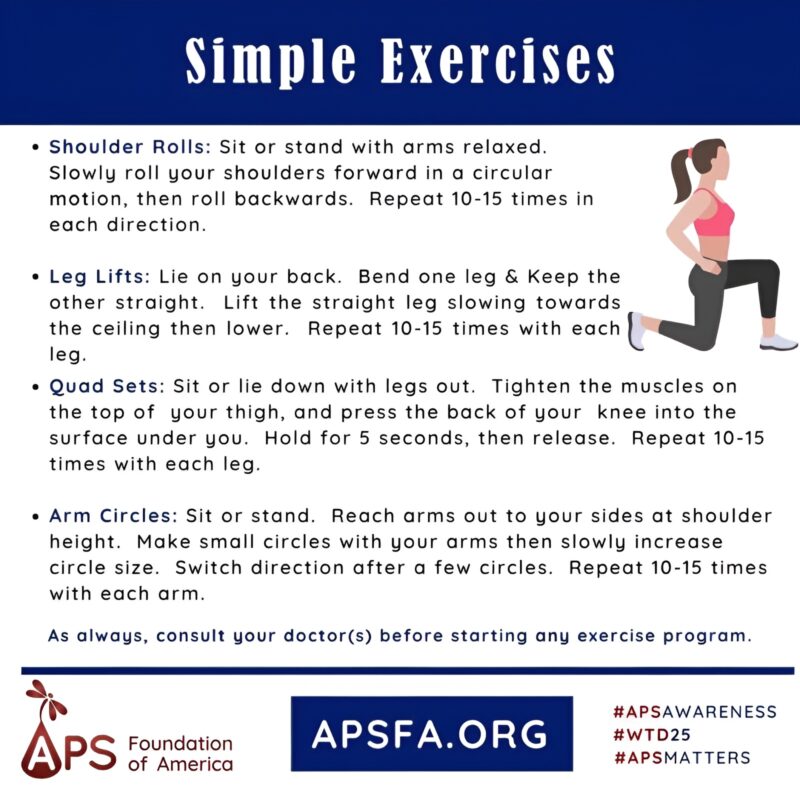
5 Simple Exercises By Christina P. That Support Health in Antiphospholipid Syndrome
Christina (Tina) P., CEO and Co-Founder of APS Foundation of America, posted on LinkedIn:
”Living with Antiphospholipid Syndrome (APS) or any other clotting disorder can bring fatigue, joint pain, swelling, and a higher risk of blood clots. While intense workouts may feel out of reach, gentle, simple exercises can play a powerful role in maintaining your health and well-being.
1. Improves Circulation
Regular movement helps prevent blood from pooling, especially in the legs – reducing the risk of deep vein thrombosis (DVT) and other clot-related complications.
2. Supports Joint and Muscle Health
Low-impact activity helps keep your joints flexible and muscles strong, which is important when dealing with inflammation, stiffness, or autoimmune flares.
3. Boosts Energy and Mood
Even 10 minutes of light movement a day can increase endorphins, fight fatigue, and improve mental clarity – all common challenges for people with APS.
4. Reduces Stress
Exercise helps regulate stress hormones and calm the nervous system, which may ease autoimmune flares and improve sleep.
5. You’re in Control
Simple exercises (like stretching, walking, chair yoga, or gentle resistance) can be done at your own pace, tailored to how you feel day to day.”

Stay updated with Hemostasis Today.
-
Nov 29, 2025, 18:55Ahmad Thuaimer: Success Story – Advanced Interventional Care for DVT
-
Nov 29, 2025, 17:37Almahdi Ali Explores Ipsilateral Paradoxical Thromboembolism at 22nd European Angiology Days 2025
-
Nov 29, 2025, 17:23Jack Shuang Hou Shares Major Neurology Updates This Week
-
Nov 29, 2025, 16:52Federica Fogacci on Further Strengthening Collaboration Within the Lp(a)CCELERATE Study
-
Nov 29, 2025, 16:42Dr Abdul Mannan on the Echinocyte: Mastering the Diagnostic Duality of Artifact vs. Pathology
-
Nov 29, 2025, 16:42Vikas Dua: Heme Next 1.0 A Conference with a Difference
-
Nov 29, 2025, 16:41Hind Ali: Sources Of Error in Cell Counts
-
Nov 29, 2025, 16:40Maxime Dely: Even on a Break, You Can Give
-
Nov 29, 2025, 16:39Shrinidhi Nathany: HemeNext Brings Science, Technology, and Leadership Together
